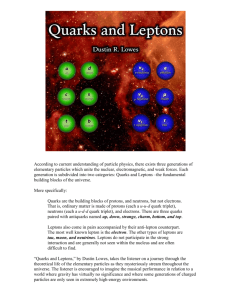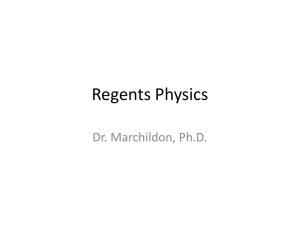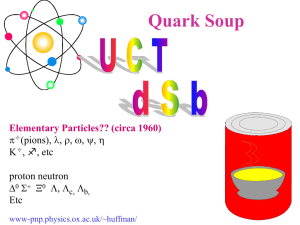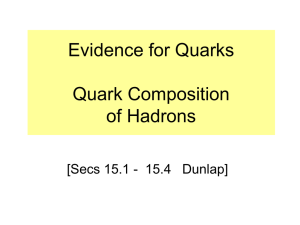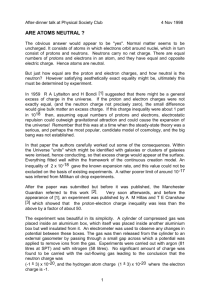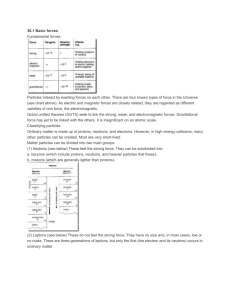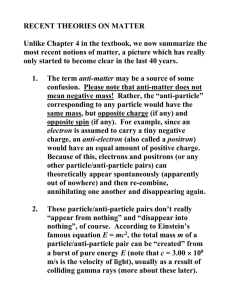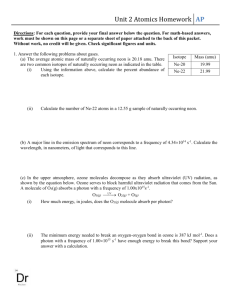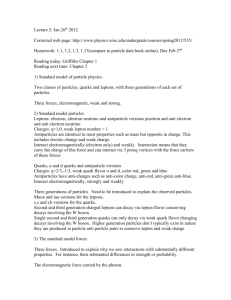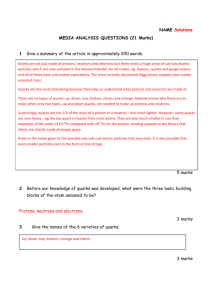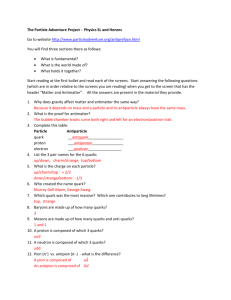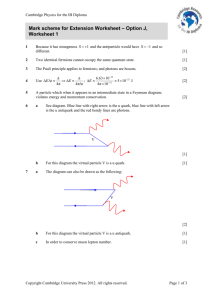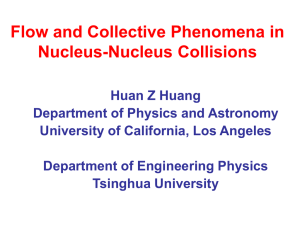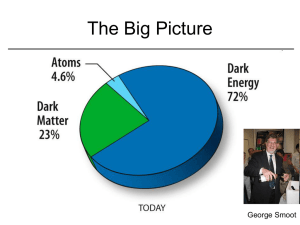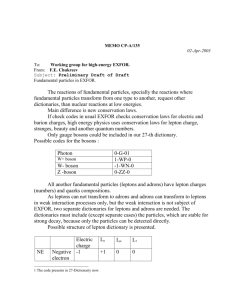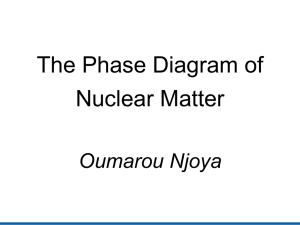Particle Physics for PH2
advertisement
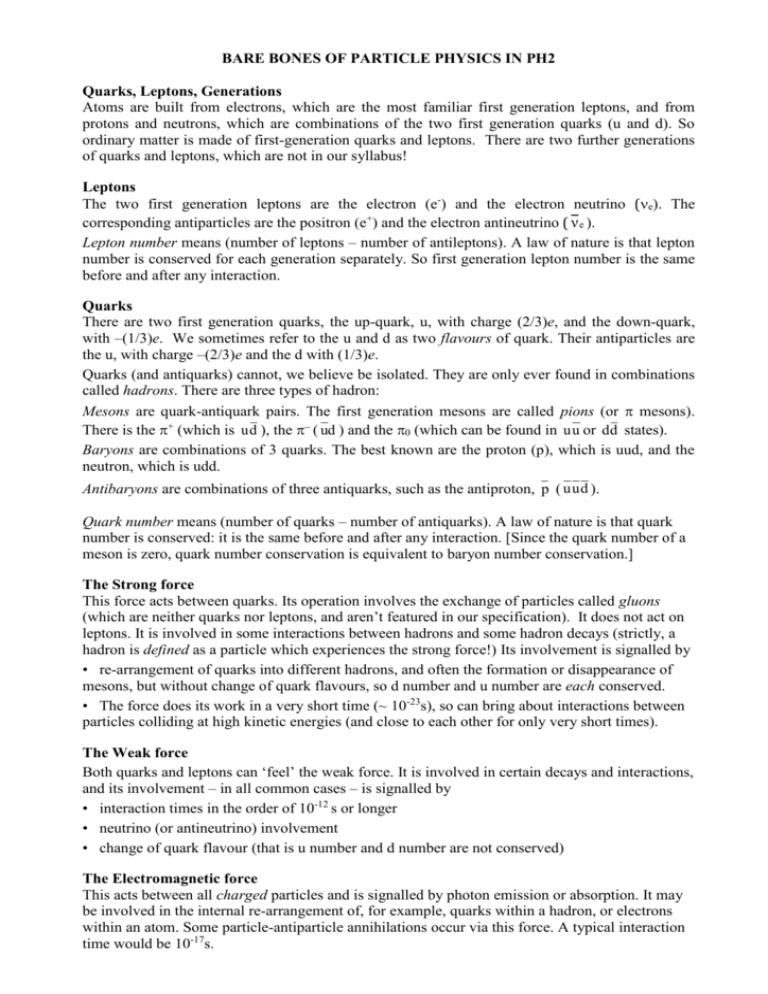
BARE BONES OF PARTICLE PHYSICS IN PH2 Quarks, Leptons, Generations Atoms are built from electrons, which are the most familiar first generation leptons, and from protons and neutrons, which are combinations of the two first generation quarks (u and d). So ordinary matter is made of first-generation quarks and leptons. There are two further generations of quarks and leptons, which are not in our syllabus! Leptons The two first generation leptons are the electron (e-) and the electron neutrino (e). The corresponding antiparticles are the positron (e+) and the electron antineutrino ( ν e ). Lepton number means (number of leptons – number of antileptons). A law of nature is that lepton number is conserved for each generation separately. So first generation lepton number is the same before and after any interaction. Quarks There are two first generation quarks, the up-quark, u, with charge (2/3)e, and the down-quark, with –(1/3)e. We sometimes refer to the u and d as two flavours of quark. Their antiparticles are the u, with charge –(2/3)e and the d with (1/3)e. Quarks (and antiquarks) cannot, we believe be isolated. They are only ever found in combinations called hadrons. There are three types of hadron: Mesons are quark-antiquark pairs. The first generation mesons are called pions (or mesons). There is the + (which is ud ), the ( ud ) and the 0 (which can be found in uu or dd states). Baryons are combinations of 3 quarks. The best known are the proton (p), which is uud, and the neutron, which is udd. Antibaryons are combinations of three antiquarks, such as the antiproton, p ( uud ). Quark number means (number of quarks – number of antiquarks). A law of nature is that quark number is conserved: it is the same before and after any interaction. [Since the quark number of a meson is zero, quark number conservation is equivalent to baryon number conservation.] The Strong force This force acts between quarks. Its operation involves the exchange of particles called gluons (which are neither quarks nor leptons, and aren’t featured in our specification). It does not act on leptons. It is involved in some interactions between hadrons and some hadron decays (strictly, a hadron is defined as a particle which experiences the strong force!) Its involvement is signalled by • re-arrangement of quarks into different hadrons, and often the formation or disappearance of mesons, but without change of quark flavours, so d number and u number are each conserved. • The force does its work in a very short time (~ 10-23s), so can bring about interactions between particles colliding at high kinetic energies (and close to each other for only very short times). The Weak force Both quarks and leptons can ‘feel’ the weak force. It is involved in certain decays and interactions, and its involvement – in all common cases – is signalled by • interaction times in the order of 10-12 s or longer • neutrino (or antineutrino) involvement • change of quark flavour (that is u number and d number are not conserved) The Electromagnetic force This acts between all charged particles and is signalled by photon emission or absorption. It may be involved in the internal re-arrangement of, for example, quarks within a hadron, or electrons within an atom. Some particle-antiparticle annihilations occur via this force. A typical interaction time would be 10-17s. EXAMPLES TO HELP COVER BARE BONES (DRAFT) Here are a few interactions or decays. In each case one can – indeed should – • Check lepton number conservation, • Check quark number conservation, • Identify the forces involved, using more than one tell-tale sign if possible. 1. Neutron decay (half life about 15 minutes for an isolated neutron) n p e ν e 2. A high energy interaction between a proton and a pion p + π n π π 3. One form of neutral pion decay (half life about 1017 s) π0 γ γ 4. One form of charged pion decay (about 3 108 s) π e e 5. The start of the p-p chain in the Sun p + p p n e νe
